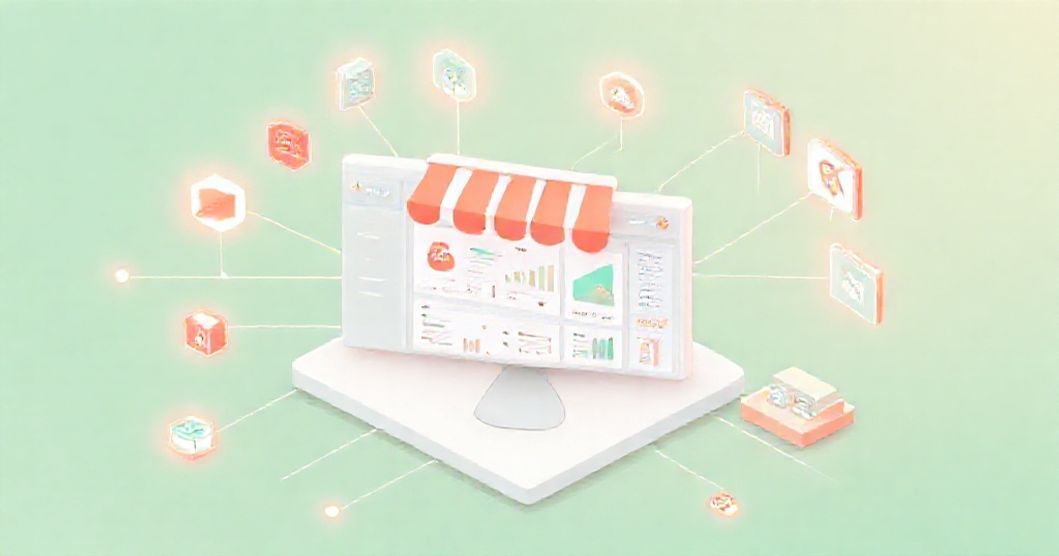In today’s competitive e-commerce landscape, Etsy sellers constantly seek innovative ways to optimize their operations and maximize growth. Navigating the demands of order fulfillment, inventory tracking, and customer engagement can be challenging without the right tools. Etsy integrations offer a powerful solution, connecting your shop with external platforms to automate tasks, streamline workflows, and unlock new opportunities for expansion. This comprehensive guide explores essential integration categories, providing strategic insights to help sellers leverage these tools effectively and transform their Etsy business.
What Are Etsy Integrations and Why They Matter?
Etsy integrations refer to third-party applications or services that connect directly or indirectly with your Etsy shop. These connections facilitate seamless data flow and automate various aspects of your business, ranging from inventory synchronization to financial reporting. Their primary purpose is to enhance operational efficiency, reduce manual effort, and minimize errors, allowing sellers to focus more on creation and less on administrative tasks.
The strategic importance of adopting these integrations cannot be overstated for any serious Etsy seller. They are crucial for scaling your business, improving customer satisfaction through faster processing, and gaining clearer insights into your shop’s performance. By automating repetitive processes, integrations free up valuable time, making your Etsy venture more sustainable and profitable in the long run.
Key Categories of Etsy Integrations
Etsy sellers can benefit from a diverse array of integrations tailored to specific business needs. These tools generally fall into distinct categories, each addressing a critical aspect of running an online shop. Understanding these categories is the first step toward building a robust and efficient operational framework for your Etsy store. From managing your stock to connecting with customers, the right integration can make a significant difference.
Inventory Management: Syncing Stock for Seamless Selling
Maintaining accurate inventory levels is paramount for any e-commerce business, especially for sellers managing multiple sales channels. Inventory management integrations automatically sync your stock across Etsy and other platforms, preventing frustrating oversells and ensuring customers can always purchase available items. Tools like Sellbrite or eSwap provide a centralized hub for all your product listings and quantities, updating them in real-time as sales occur.
These integrations offer substantial benefits by saving countless hours of manual updates and reducing the risk of human error. They are particularly valuable for sellers expanding beyond Etsy to platforms like Shopify or Amazon. By consolidating inventory data, sellers gain a clearer overview of their stock, enabling smarter purchasing decisions and more efficient production schedules, directly impacting overall profitability.
Optimizing Shipping: Efficiency from Label to Delivery
Efficient shipping is a cornerstone of customer satisfaction and repeat business in the e-commerce world. Shipping integrations automate the entire fulfillment process, from generating shipping labels to sending tracking information directly to buyers. Platforms such as ShipStation or Pirate Ship integrate with your Etsy orders, allowing for bulk label printing, discounted shipping rates, and streamlined package tracking.
These tools not only save time but also significantly reduce shipping costs, which directly contributes to higher profit margins for sellers. Automating tracking updates keeps customers informed and happy, reducing inquiries and improving the overall post-purchase experience. For shops with a high volume of orders, these integrations are indispensable for maintaining operational speed and reliability.
Automating Accounting: Simplifying Financial Tracking
Accurate financial record-keeping is vital for understanding your business’s health, making informed decisions, and simplifying tax season. Accounting integrations connect your Etsy sales data directly with popular accounting software. Solutions like QuickBooks Online or Xero can be linked via third-party tools (e.g., A2X), automatically importing your transactions, fees, and payouts.
This automation eliminates the tedious task of manual data entry, drastically reducing the chances of errors in your financial statements. Sellers gain real-time insights into their revenue, expenses, and profitability, making budgeting and tax preparation much simpler. Understanding your true profit margins per product type becomes effortless, empowering strategic pricing and product development.
Boosting Marketing Efforts: Engaging Your Etsy Audience
While Etsy provides some marketing tools, integrating with external platforms can significantly amplify your reach and customer engagement. Email marketing integrations, such as Mailchimp, allow you to collect customer emails (with consent) and build targeted campaigns. You can send newsletters, announce new products, or offer exclusive discounts, fostering a stronger relationship beyond the initial purchase.
These marketing integrations are crucial for building brand loyalty and encouraging repeat purchases. They offer a more personalized communication channel compared to general Etsy announcements. By segmenting your audience and tailoring your messages, you can significantly increase conversion rates and build a loyal customer base, expanding your brand presence outside the Etsy marketplace itself.
Expanding Beyond Etsy: Multi-Channel Selling Strategies
Many successful Etsy sellers eventually consider expanding their reach by selling on other platforms or through their own website. Multi-channel selling integrations are designed to manage products, inventory, and orders across all these diverse sales channels from a single dashboard. Tools like Sellbrite or LitCommerce centralize your entire e-commerce operation, providing a unified view.
This strategic approach allows sellers to tap into new customer bases and diversify their income streams without the headache of managing each platform independently. It’s particularly beneficial for unique product types or those with broad market appeal, offering a pathway to significant growth. Understanding how to leverage these integrations is key to scaling an Etsy business into a multi-platform enterprise.
Selecting the Right Integrations for Your Shop
Choosing the most suitable Etsy integrations requires careful consideration of your specific business needs, budget, and growth aspirations. Begin by identifying your biggest pain points: Is it inventory management, shipping, or accounting? Research tools that directly address these challenges, looking for those with strong reviews and reliable customer support. Many integrations offer free trials, allowing you to test their functionality before committing.
Consider the pricing models, which can range from free basic plans to monthly subscriptions costing anywhere from $20 to over $100, depending on features and usage volume. Prioritize ease of use and compatibility with your existing tech stack. A well-chosen suite of integrations should seamlessly enhance your workflow, not complicate it, ultimately contributing to a more efficient and profitable Etsy business.
Empowering Your Etsy Business for Growth
Etsy integrations are more than just supplementary tools; they are fundamental components for building a resilient, efficient, and scalable e-commerce business. By strategically adopting solutions for inventory, shipping, accounting, and marketing, sellers can automate tedious tasks, reduce operational costs, and significantly improve the customer experience. Embracing these technological advancements empowers sellers to optimize their time, foster growth, and navigate the evolving digital marketplace with confidence, securing a strong future for their Etsy shop.






